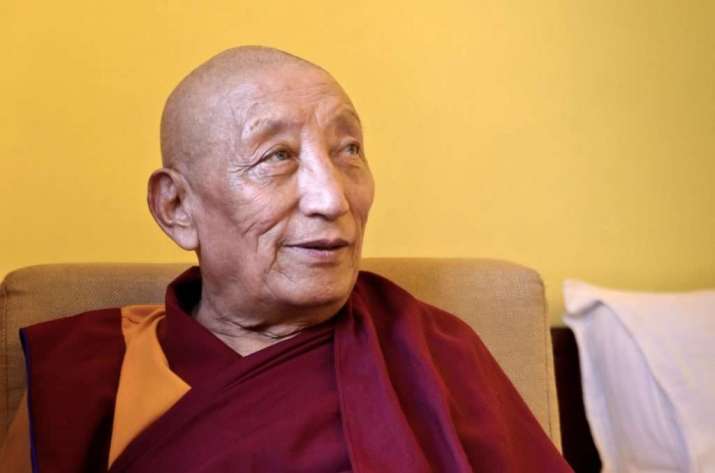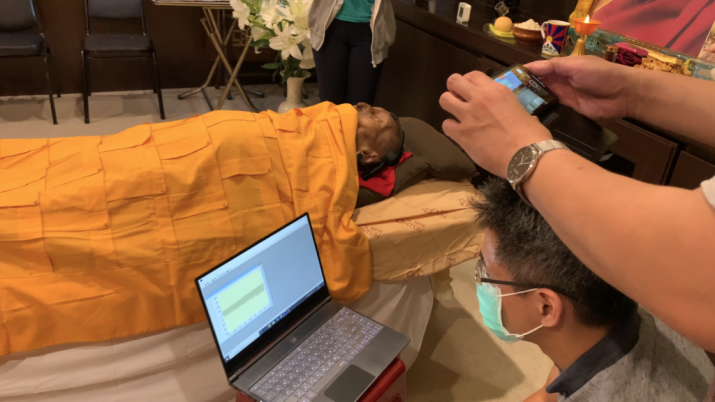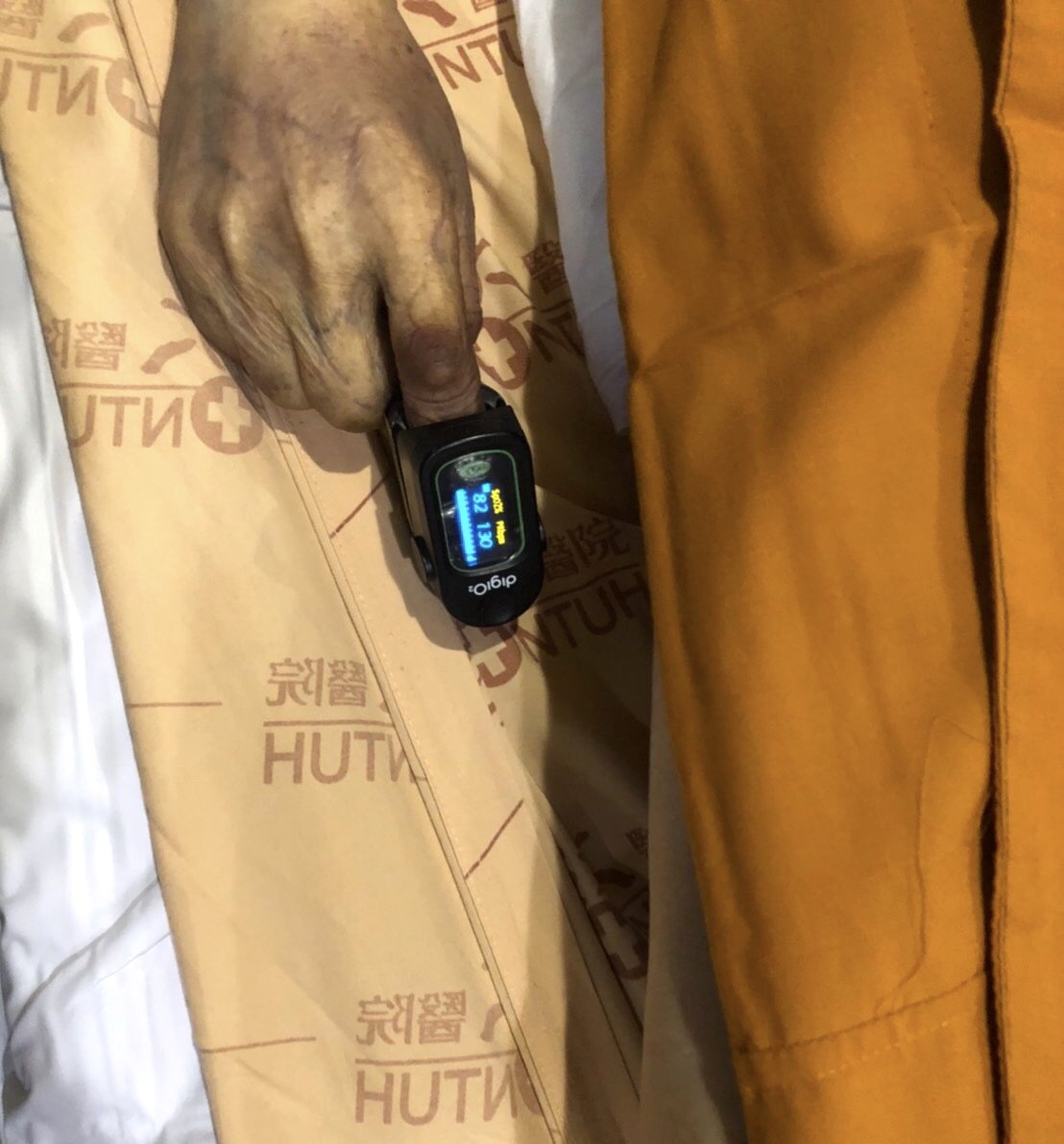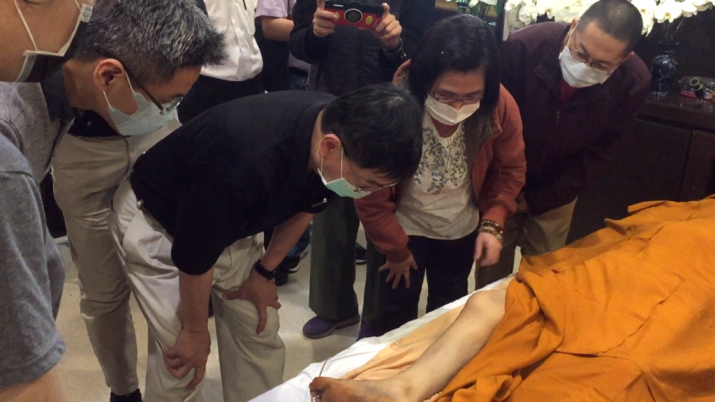NEWS
Tibetan Buddhist Monk Geshe Jampa Gyatso Reported to Have Attained a State of Thukdam
 Geshe Jampa Gyatso. From tibet.net
Geshe Jampa Gyatso. From tibet.netThe Central Tibetan Administration (CTA) has reported that the Taiwan-based Tibetan Buddhist monk and scholar Geshe Jampa Gyatso since last month entered the tantric meditative state of thukdam (Tib: ཐུགས་དམ་)—a Tibetan term for the advanced meditative state practiced by Buddhist masters during the intermediate post-death period.
Citing information from the Taiwan branch of the Office of Tibet, the CTA said that Geshe Gyatso was reported to have died on 14 July, and that the unusual circumstances had been taken as an opportunity to gain a deeper scientific understanding of the thukdam state. The geshe’s remains were scheduled to be cremated today, in accordance with an astrological reading taken following his death.
After his clinical death on July 14, the mortal remains of Geshe Gyatso was returned to his funeral home. His close friend, Geshe Norbu of Sera Jey Monastery who had arrived for the prayer services held on the first and second day observed that his body emitted no signs of death in hue or odour, and assessed that the deceased had entered the state of thukdam.
On the third day, President Abbot Jigme Namgyal of the International Tibetan Buddhist Centre had seconded the observation.
At the time, Taiwan was in the midst of peak summer, yet nothing could be detected from an observation of the mortal remains.
The staff of the Office of Tibet revisited the body on the 5th day to determine signs of decay and decomposition. Similarly, it was examined by medical professionals who expressed their complete astonishment at the phenomenon, and the account of which was subsequently apprised to the Office of His Holiness the Dalai Lama. (Central Tibetan Administration)
Geshe Gyatso was a spiritual guide at the Taiwan branch of the Office of Tibet.
 Scientists monitor neural activity. From tibet.net
Scientists monitor neural activity. From tibet.netThe term thukdam describes an advanced type of tantric meditation in the Vajrayana tradition practiced by a Buddhist master during the intermediate or transitional state of death known as bardo. During this period, when biological signs of life have ceased yet the body remains fresh and intact for several days, the master is described as being absorbed in the primordial “clear light stage,” a process of inner dissolution. In 2018, His Holiness the Dalai Lama initiated a scientific inquiry into the neuro-physiological mechanisms of thukdam.
In his widely praised book The Tibetan Book of Living and Dying, the Tibetan Dzogchen teacher Sogyal Lakar explains:
A realized practitioner continues to abide by the recognition of the nature of mind at the moment of death, and awakens into the Ground Luminosity when it manifests. He or she may even remain in that state for a number of days. Some practitioners and masters die sitting upright in that state for a number of days. Some practitioners and masters die sitting upright in meditation posture, and others in the “posture of the sleeping lion.” Besides their perfect poise, there will be other signs that show they are resting in the state of the Ground Luminosity: There is still a certain color and glow in their face, the nose does not sink inward, the skin remains soft and flexible, the body does not become stiff, the eyes are said to keep a soft and compassionate glow, and there is still a warmth at the heart. Great care is taken that the master’s body is not touched, and silence is maintained until he or she has arisen from this state of meditation.
The CTA, often referred to as the Tibetan government-in-exile, reported that arrangements were made to conduct a detailed medical and scientific observations of Geshe Gyatso’s condition prior to his cremation on 21 August, by scientists from Academia Sinica, the pre-eminent academic research institution in Taiwan.

Readings are taken from the body. From tibet.net
Prof. Ting-kuo Lee, who previously participated in a 2018 dialogue in Dharamsala on quantum physics between the Dalai Lama and Chinese scientists, led a research team from Academia Sinica to undertake the first scientific examination of Geshe Gyatso on 24 July.
Under the guidance of the Office of His Holiness the Dalai Lama, changes to the physical state of Geshe Gyatso’s body were documented with photographs and video. The CTA reported that a physical examination showed that oxygen levels in the body were not far below those of a living person, with a reading of 86. A lack of decomposition was observed in internal organs, while the skin was described as remaining supple, and a “facial glow and warmth was noted under close examination.” (Central Tibetan Administration) On 28 July and 1 August, a team from Taiwan University recorded significant activity from neural readings of the brain.
“The observations of the scientists, professors, medical professionals, along with the photo and video documentation, accounts of caretaker and students on the Geshe’s 28 days of thukdam will also be submitted to the Office of His Holiness the Dalai Lama,” the CTA reported. (Central Tibetan Administration)
 Scientists from Academia Sinica examine the body for signs of decay and decomposition. From tibet.net
Scientists from Academia Sinica examine the body for signs of decay and decomposition. From tibet.netReferences
Sogyal Rinpoche. 1992. The Tibetan Book of Living and Dying. New York City: HarperCollins.
See more
Tibetan Geshe in rare post death meditative state sparks new research in Thukdam (Central Tibetan Administration)
Monk researchers can now enrol for joint project of Russian scientists and Buddhist monasteries (Central Tibetan Administration)
An inquiry into a post-death Buddhist meditative practice (Central Tibetan Administration)
Tibetan scholar in rare meditative state of 'thukdam' after death (The Sentinal)
Tibetan scholar in rare meditative state after death (The Tribune)
Related news from Buddhistdoor Global
Lhundrub Chime Gatsal Ling Announces Passing of Garje Khamtrul Rinpoche
Buddhist Scholars, Russian Scientists Probe Neurology of Death Meditation
Renowned Sakyapa Teacher His Holiness Dagchen Rinpoche Dies
Related features from Buddhistdoor Global
Science and the Rainbow Body, Part 9: Dying into Elemental Light
Can You Wish Metta to the Dying?
Do Not Resuscitate
Tibetan Book of the Dead, Part One: Cosmic Jumper
The Mahaparinirvana Ceremony of His Holiness Chatral Sangay Dorje Rinpoche














